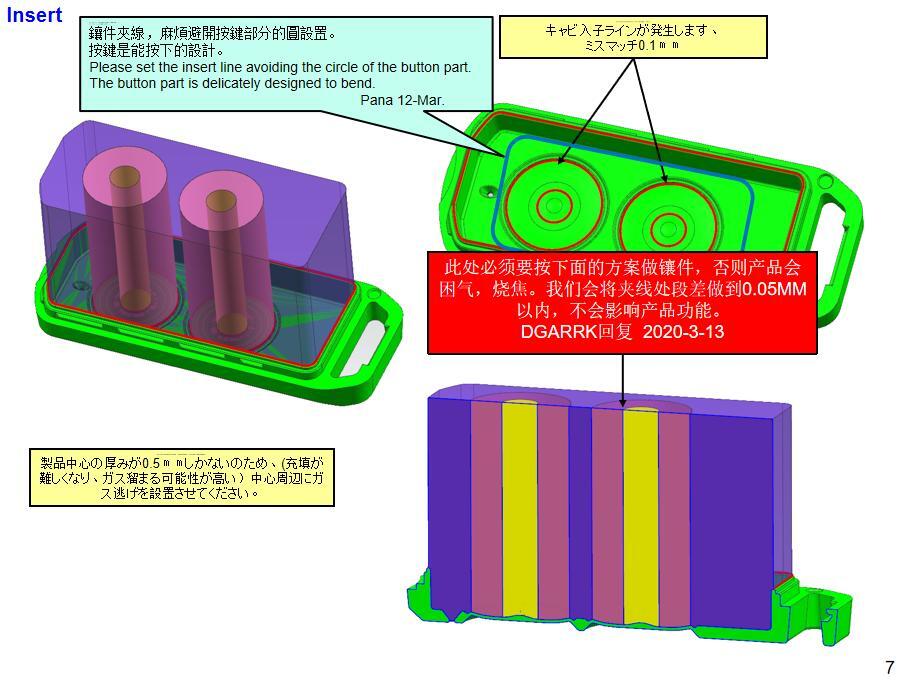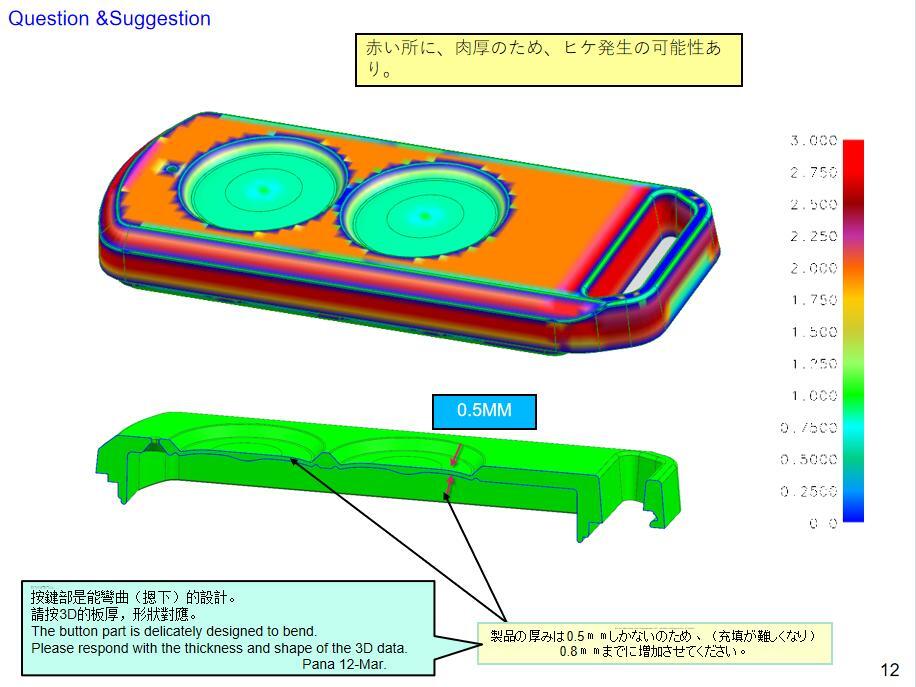mold making process
What is covered in the plastic mold making process?
The plastic mold making process typically involves the following steps: designing the mold, machining the mold, heat treating the mold, polishing the mold, and testing the mold. Depending on the complexity of the mold, additional steps may be required, such as creating a prototype, creating a mold insert, and creating a mold base.
Mold design
Mold design is the process of creating a 3D model of a product or part that can be used to create a physical object. It involves the use of CAD software to create a 3D model of the product or part, which is then used to create a mold that can be used to produce the desired object. The process also includes the selection of materials, the design of the mold, and the production of the mold. Mold design is an important part of the manufacturing process, as it ensures that the product or part is produced with the highest quality and accuracy.
Mold prototyping
Mold prototyping is a process used to create a prototype of a product or part using a mold. It involves creating a mold from a 3D model or CAD drawing, then using the mold to create a prototype of the product or part. The process is often used to create prototypes of plastic parts, but can also be used to create prototypes of metal parts. Mold prototyping is a cost-effective way to quickly create a prototype of a product or part, and can be used to test the design before committing to a full production run.
Mold manufacturing
Mold manufacturing is the process of creating molds that are used to shape and form plastic and metal parts. It involves the use of specialized machines and tools to create the desired shape and size of the mold. The process typically begins with the design of the mold, which is then machined from a block of metal or plastic. The machined mold is then tested to ensure it meets the desired specifications. Once the mold is approved, it is then used to create the desired parts. Mold manufacturing is an important part of the manufacturing process and is used in a variety of industries.
Mold testing
Mold testing is a process used to identify the presence of mold in a home or building. It involves collecting samples of air, dust, and surfaces, and then sending them to a laboratory for analysis. The results of the test can help determine the type and amount of mold present, as well as the potential health risks associated with it. Mold testing can also help identify the source of the mold, which can be helpful in preventing future mold growth.
Mold inspection
Mold inspection is an important part of home maintenance. It involves a thorough inspection of the home to identify any areas where mold may be present. This includes checking for visible signs of mold, such as discoloration or musty odors, as well as testing for mold spores in the air. If mold is found, a professional can recommend the best course of action to remove it and prevent it from returning.
The content of the plastic mold making process operation guidance
1. Prepare the mold:
a. Check the mold drawings and specifications to ensure that the mold is suitable for the product.
b. Clean the mold and check for any damage or wear.
c. Check the mold for any loose or missing parts.
d. Check the mold for any sharp edges or burrs.
2. Set up the molding machine:
a. Check the machine settings to ensure that they are correct for the product.
b. Check the machine for any damage or wear.
c. Check the machine for any loose or missing parts.
d. Check the machine for any sharp edges or burrs.
3. Prepare the material:
a. Check the material for any damage or contamination.
b. Check the material for any loose or missing parts.
c. Check the material for any sharp edges or burrs.
4. Load the mold:
a. Load the mold into the machine.
b. Secure the mold in the machine.
c. Check the mold for any damage or wear.
5. Start the molding process:
a. Set the machine to the correct settings for the product.
b. Start the machine and monitor the process.
c. Check the product for any defects or inconsistencies.
6. Unload the mold:
a. Unload the mold from the machine.
b. Check the product for any defects or inconsistencies.
c. Check the mold for any damage or wear.
7. Clean the mold:
a. Clean the mold with the appropriate cleaning solution.
b. Check the mold for any damage or wear.
c. Check the mold for any loose or missing parts.
d. Check the mold for any sharp edges or burrs.
8. Inspect the product:
a. Inspect the product for any defects or inconsistencies.
b. Check the product for any damage or wear.
c. Check the product for any loose or missing parts.
d. Check the product for any sharp edges or burrs.
9. Package the product:
a. Package the product according to the customer’s specifications.
b. Label the package with the product information.
c. Secure the package for shipping.

The production equipment needed for the production process of the plastic mold making
1. CNC Machining Centers
2. EDM Machines
3. Grinding Machines
4. Lathes
5. Milling Machines
6. Drilling Machines
7. Injection Molding Machines
8. Heat Treatment Furnaces
9. Ultrasonic Cleaners
10. Polishing Machines
Environment requirement standard for plastic mold making
1. Temperature: The temperature of the workshop should be kept between 18-25 degrees Celsius.
2. Humidity: The humidity of the workshop should be kept between 40-60%.
3. Ventilation: The workshop should be well ventilated to ensure that the air is fresh and clean.
4. Lighting: The workshop should be well lit to ensure that the workers can see clearly.
5. Cleanliness: The workshop should be kept clean and free of dust and debris.
6. Safety: The workshop should be equipped with safety equipment such as fire extinguishers, first aid kits, and emergency exits.
7. Noise: The noise level in the workshop should be kept to a minimum to ensure the comfort of the workers.
plastic mold making process layout
1. Mold Design: This is the first step in the plastic mold making process. It involves creating a 3D model of the desired part or product. This model is then used to create the mold design.
2. Mold Manufacturing: This is the second step in the plastic mold making process. It involves creating the actual mold from the design. This is done using a variety of materials such as aluminum, steel, and plastic.
3. Mold Testing: This is the third step in the plastic mold making process. It involves testing the mold to ensure that it meets the desired specifications. This is done using a variety of tests such as pressure testing, temperature testing, and dimensional testing.
4. Mold Assembly: This is the fourth step in the plastic mold making process. It involves assembling the mold components into a complete mold. This is done using a variety of tools such as drills, saws, and presses.
5. Mold Finishing: This is the fifth step in the plastic mold making process. It involves finishing the mold to give it a smooth and attractive appearance. This is done using a variety of techniques such as polishing, sanding, and painting.

Cost analysis of plastic mold making process layout
The cost of plastic mold making process layout depends on the complexity of the mold, the size of the mold, the number of cavities, and the type of material used. Generally, the cost of a plastic mold making process layout can range from a few hundred dollars to several thousand dollars. The cost of the process layout also depends on the complexity of the design, the number of components, and the number of operations required to produce the mold. Additionally, the cost of the process layout may also include the cost of the tools and equipment needed to produce the mold.
Requirements for equipment in plastic mold making process
1. Molding Machines: Molding machines are used to shape and form plastic parts. They come in a variety of sizes and types, including injection molding machines, blow molding machines, and compression molding machines.
2. Molds: Molds are the tools used to create the desired shape of the plastic part. They are typically made of steel or aluminum and can be custom-made for specific parts.
3. Auxiliary Equipment: Auxiliary equipment is used to support the molding process. This includes items such as hoppers, dryers, chillers, and granulators.
4. Materials: The materials used in the molding process include plastic resins, colorants, and additives.
5. Quality Control Equipment: Quality control equipment is used to ensure that the parts produced meet the desired specifications. This includes items such as calipers, gauges, and microscopes.
Plastic mold making process management
plastic mold making process management involves overseeing the entire process of creating a mold from start to finish. This includes planning, designing, manufacturing, testing, and quality control. The goal is to ensure that the mold is produced to the highest quality standards and meets customer requirements. This process requires close collaboration between the mold designer, the plastic mold maker, and the customer. It also requires a thorough understanding of the materials and processes involved in plastic mold making.
The current shortcomings of the plastic mold making process
1. Poor mold design: Poorly designed molds can lead to inefficient production processes, resulting in higher costs and longer lead times.
2. Poor tooling: Poorly designed tooling can lead to inefficient production processes, resulting in higher costs and longer lead times.
3. Poor material selection: Poorly selected materials can lead to inefficient production processes, resulting in higher costs and longer lead times.
4. Poor process control: Poor process control can lead to inefficient production processes, resulting in higher costs and longer lead times.
5. Poor quality control: Poor quality control can lead to inefficient production processes, resulting in higher costs and longer lead times.
6. Poor maintenance: Poor maintenance can lead to inefficient production processes, resulting in higher costs and longer lead times.

Plastic mold making process material selection
The material selection for plastic mold making depends on the application and the desired properties of the finished product. Common materials used in plastic mold making include aluminum, steel, and plastic. Each material has its own advantages and disadvantages, so it is important to consider the application and desired properties when selecting a material. Aluminum is lightweight and corrosion-resistant, making it a popular choice for molds used in injection molding. Steel is strong and durable, making it a good choice for molds used in die casting. Plastic is lightweight and cost-effective, making it a popular choice for molds used in blow molding.
plastic mold making process design technology
Pastic mold making process design technology involves the use of CAD/CAM software to create a 3D model of the desired product. This model is then used to create a mold that will be used to produce the product. The mold is designed to ensure that the product is produced with the desired shape, size, and other characteristics. The mold is then machined using CNC machines to create the desired shape and features. The mold is then tested to ensure that it meets the desired specifications. Finally, the mold is used to produce the product.
Our Certificates
By co-operating with Elite Mold, you have selected one of the most reliable ISO 9001 certified plastic mold manufacturer, Elite Mold as a plastic injection mold manufacturer specializing in plastic injection mold and supplying plastic injection molding services for plastic mold design, prototype makings, mold flow analysis, precise machining, OEM services, ODM services and so on, building custom plastic injection molding. We are committed to enhance the Process optimized and quality of service, shorten lead time and assist in lowering inventory, by providing new products every year to bring in continuous and higher profits for our clients. The ability to produce mold at the International standard, strong engineering and mold design capability, aggressive delivery, competitive pricing and business integrity continues to be the success factor of Elite Mold.






